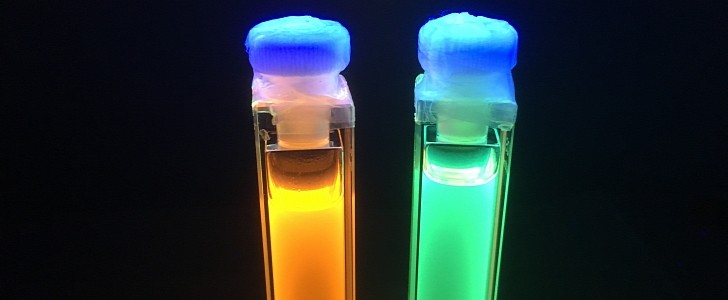Researchers have developed a process that could let us know when electric motors are showing signs of wear and tear, with a special kind of dye.
Nowadays, if you own a car that uses a combustion engine, it is easy to know when it is time for maintenance procedures, such as changing the oil, because these vehicles are now equipped with special sensors that save you a lot of trouble. Unfortunately, that’s not the case with electric motors, which wear out just the same, but it’s harder to determine when they’re about to fail.
Scientists from the Martin Luther University Halle-Wittenberg in Germany have partnered with ELANTAS, a company that specializes in insulating materials, to come up with a solution to this problem.
Electric motors consist of tightly wound copper wires that are coated with an insulating resin. As the engine starts to wear out, it changes the insulation, making it more brittle, due to all the heat and chemical processes it’s exposed to.
The bad news is that from the outside, there’s no way to see how intact the insulation is or if the motor is about to fail and needs to be changed. All we know is that it degrades depending on the conditions it is used in, and temperature is a major culprit.
Researchers tested several commonly used resins and they all released a specific alcohol when exposed to different temperatures. Scientists then came up with a substance that changes color when that alcohol binds to it but doesn’t modify in any way the properties of the insulation.
The dye they came up with glows orange in normal conditions but changes to green when alcohol binds to it. The more alcohol, the greener it gets.
Researchers explained that it is possible to install special devices in the engine to analyze these colors and warn drivers of any replacements that need to be done, without needing to open up the engine.
ELANTAS already filed a patent for this process at the beginning of 2021.
Scientists from the Martin Luther University Halle-Wittenberg in Germany have partnered with ELANTAS, a company that specializes in insulating materials, to come up with a solution to this problem.
Electric motors consist of tightly wound copper wires that are coated with an insulating resin. As the engine starts to wear out, it changes the insulation, making it more brittle, due to all the heat and chemical processes it’s exposed to.
The bad news is that from the outside, there’s no way to see how intact the insulation is or if the motor is about to fail and needs to be changed. All we know is that it degrades depending on the conditions it is used in, and temperature is a major culprit.
Researchers tested several commonly used resins and they all released a specific alcohol when exposed to different temperatures. Scientists then came up with a substance that changes color when that alcohol binds to it but doesn’t modify in any way the properties of the insulation.
The dye they came up with glows orange in normal conditions but changes to green when alcohol binds to it. The more alcohol, the greener it gets.
Researchers explained that it is possible to install special devices in the engine to analyze these colors and warn drivers of any replacements that need to be done, without needing to open up the engine.
ELANTAS already filed a patent for this process at the beginning of 2021.

